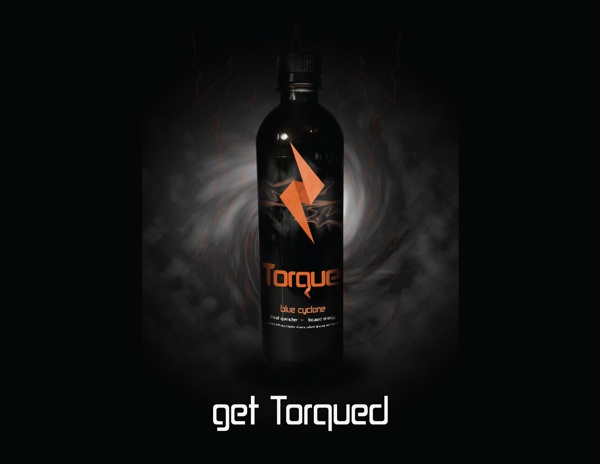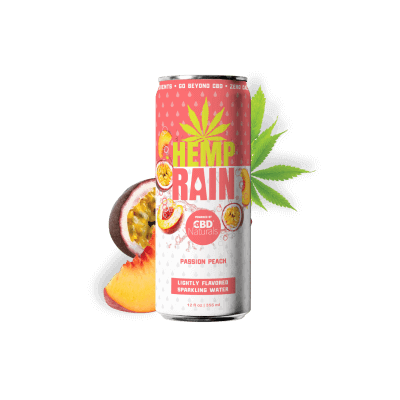
Cannabinoid-induced hyperemesis can be caused by cannabis ingestion. The causes of the condition are still unknown, but the medical profession is concerned by the rising use of cannabis. Multiple medical specialties, such as pediatrics and forensic pathology are studying the symptoms. The symptoms of cannabinoid hyperemesis are related to the effects of D-9-tetrahydrocannabinol, a cannabinoid that binds to the CB1 receptor in the brain. If the receptor is deregulated, the result may be nausea.
Symptoms
Cannabinoid-induced hyperemesis syndrome refers to a condition that causes frequent nausea and vomiting in people who use marijuana. The symptoms can last several months or even years, and may be intermittent. This condition is named after the active chemicals found in marijuana. Cannabis can also cause emesis. A medical term that describes someone's tendency to vomit, it is also known as a cause.
A physician may be capable of diagnosing the condition based upon the symptoms the patient experiences. The healthcare provider will collect information about the patient and conduct a physical examination. Some healthcare providers may not have a good understanding of the condition. They may mistake it with cyclical vomit disorder. In some cases, the healthcare provider will refer the patient to a gastroenterologist for a more precise diagnosis. However, no single test can confirm that a patient is suffering from cannabinoid hyperemesis syndrome. To see improvement, the patient must stop using marijuana.

Treatment
Cannabinoid hypoemesis syndrome, also known as CHS, is a severe condition that can occur when an individual consumes too much cannabis. Treatment options for CHS are numerous once it is diagnosed. CHS treatment is best if you stop using cannabis. While some people experience symptoms for several days after quitting cannabis use, they usually feel better once they have stopped.
CHS patients may experience abdominal pain, and they might be admitted to the emergency room. A variety of pain medication options and diagnostic procedures are used to treat CHS. Many patients who experience recurrence of symptoms will eventually go back to the ED. Cannabinoid hyperemesis can be managed by early treatment and detection.
Phase of recovery
Patients suffering from cannabinoid hypoemeis (CHS), are often in a critical phase. The goal of treatment is to manage symptoms and stop using cannabis. The patient will receive IV fluids during this phase and be closely monitored for signs of dehydration. Inpatient stays may be required for severe cases.
Most cases of cannabinoid Hyperemesic Syndrome will resolve within a few days. Some people might experience relapses if they continue to use cannabis. CHS is treatable with cognitive behavioral therapy, family therapy, and other treatments. The disorder can't be treated alone, so it is important that you keep this in mind.

Diagnosis
The diagnosis of cannabinoiD hyperemesis syndrome can be complex and can be complicated by many factors. You may experience nausea and cyclic vomiting. To rule out other conditions, a doctor should examine patients. Often, CVS is accompanied by episodes of abdominal pain and GI bleeding. To rule out other conditions, a upper endoscopy is recommended.
While the main treatment for cannabinoid-induced hyperemesis is stopping cannabis use, there may be poor followup. To ensure the correct diagnosis and treatment, it is important that you consult a multidisciplinary team. Although a patient may not consider cannabis to be the cause of their symptoms, it is possible for them to have additional diagnostic tests.
FAQ
Which states are the biggest consumers of CBD?
California, Colorado, Oregon are the three most populous states. These states have large populations, high incomes, and low unemployment rates. They also have higher concentrations of hemp farms than other states.
California leads the pack because its economy heavily depends on agriculture. California produces a lot of the country's fruits, vegetables. This makes sense because cannabis is extracted from the same plants as hemp.
Colorado and Oregon follow close behind because they both produce marijuana for medical purposes. These two states, however, do not permit the recreational use of marijuana, as California does.
Other high-ranking states include Washington, New York and Florida.
What CBD products are the most popular?
CBD products are everywhere these days. They can be used for anything, including pain relief or anxiety. The market is growing rapidly and is very large.
But for what purpose do people buy CBD? How does this impact you as a brand manager?
According to Statista CBD products are purchased for their relaxing properties. They are also purchased for their antiinflammatory properties.
If your product contains both CBD and THC, it can be used for medicinal and recreational purposes.
But what about brands who are focused on one purpose only? It won't be able to compete if it sells CBD for pain relief.
In addition, if a brand focuses on CBD for medical purposes, then it will have a large customer base.
However, a brand that wants to target recreational customers must develop a unique selling message (USP). A USP simply means a distinctive feature or benefit that differentiates a brand's competitors.
For example, certain brands offer free shipping. Others offer discounts for bulk orders.
How big does the global CBD market look?
The global CBD market was valued at $US 3.5 billion in 2015, according to Euromonitor International. This is an increase of more than 10% compared to 2014.
The report projects that this figure will reach $US6.4 billion by 2020. This represents an average annual growth rate 12%.
CBD products are expected to account for around half of all hemp-derived products sold globally by 2020.
This includes CBD oils, as well other CBD products, including food, beverages cosmetics, pet care, and CBD oils.
Is the CBD industry saturated?
CBD industry is growing at over 25% per annum. This growth is expected to continue for at least another five years. The industry is forecast to grow from $2 Billion to $5 Billion by 2020.
Canndoc Ltd and GW Pharmaceuticals are the dominant players in the CBD market. Both companies are focused on the development of pharmaceutical-grade CBD products. They haven't been very successful so far. Both of them are having difficulty gaining traction in today's marketplace.
Cannabidiol or CBD is a form of cannabis extract with less than 0.3% HHC. It does not cause any psychoactive effects. It can be used to treat epilepsy, and other medical conditions. It is also commonly used as a dietary supplement.
There are many kinds of CBD products. Some are made using whole plant extracts, while others use isolated cannabinoids such as CBD.
All these products have in common that they contain low levels of THC.
They are now legal under US federal laws. However, this doesn't mean that you don't need to follow local laws when selling CBD products. You should always verify your state's regulations for the sale of CBD products.
In addition, there are several states where CBD products are illegal. These are California, Colorado. Florida. Mississippi. Missouri. New York. North Carolina. Ohio. Oklahoma. Oregon. Rhode Island. South Dakota. Texas. Utah. Virginia. Washington.
You will want to stay clear of CBD products if you are from one of these states.
Which countries have the best quality CBD?
The United States produces the vast majority of CBD products.
However, CBD products can also be made in Canada, Australia, New Zealand and Israel.
What's the future for the CBD industry?
The future of CBD is bright. It is easy to see why this sector is so popular. This market is expanding exponentially with CBD products being purchased globally at a total of $1 billion.
Statista reports that in 2019, global sales of CBD (cannabidiol) are expected to exceed $22.4 Billion. This is almost 200% more than 2018!
The CBD market is also predicted to grow at a compound annual growth rate of 22.5%, which equates to nearly $6.8 billion in revenue by 2022.
This is great news both for those looking to enter the market as well as existing companies. We must remember that the CBD market still has a lot of work ahead.
Statistics
- A recent systematic review of human trials also reported that individuals with epilepsy receiving CBD (5–20 mg·kg−1·day−1) were more likely to experience decreased appetite than those receiving placebo (i.e., ~20 vs. 5% of patients) (ncbi.nlm.nih.gov)
- however, one study also found that these effects were virtually abolished when the original media (a nutrient broth agar) was replaced with one containing 5% blood (increasing the minimum concentration to ~160 μM CBD) [179]. (ncbi.nlm.nih.gov)
- As a substance that was federally illegal before the passage of the 2018 Farm Bill, hemp-derived cannabinoids with no more than 0.3% THC still face a regulatory grey area. (forbes.com)
- CBD seems unlikely to directly influence sleep in healthy humans [115] (and maybe “sleep-promoting” in those with certain comorbid conditions) (ncbi.nlm.nih.gov)
- The inhibition of FAAH is predicted to lead to an increase in brain and plasma concentrations of AEA, which acts as a partial agonist at CB1R and CB2R, thereby increasing endocannabinoid tone [92, 110]. (ncbi.nlm.nih.gov)
External Links
How To
What are the issues that the CBD industry faces?
The current market for CBD products is growing at an incredible rate. There are many hurdles businesses face when trying to enter the CBD market. These include a lack of consumer awareness, high cost of entry, limited access to capital, and regulatory uncertainty.
Many consumers do not know what CBD is or how it works. This means that they cannot make informed decisions about whether or not to buy CBD products.
Many CBD companies depend heavily on word of mouth marketing. This is expensive as they must pay advertising costs and to hire staff to market their brand.
High production costs are another problem facing new entrants in the CBD industry. It is very expensive to obtain the raw materials required for CBD products. CBD oil can only then be produced if the hemp has been grown in a specific environment.
Grow enough hemp to produce CBD oil requires approximately $1,000 per annum. Because of this, many small farmers are unable to afford to grow enough hemp for CBD oil.
Access to capital is another challenge for new entrants in the CBD market. Due to the stigma surrounding the industry, banks discourage many people who wish to start businesses.
There is also regulatory uncertainty around the sale of CBD products. There are no established guidelines regarding the marketing of CBD products.
While some states have passed legislation restricting CBD products' sale, it has not been adopted as a national policy.
Only two states, Nevada and Maine, have yet to legalize recreational marijuana.
Massachusetts and Michigan are however considering similar measures.
These changes could lead to increased competition between CBD manufacturers.
These factors lead to many entrepreneurs choosing to work from their home instead of starting a physical company.